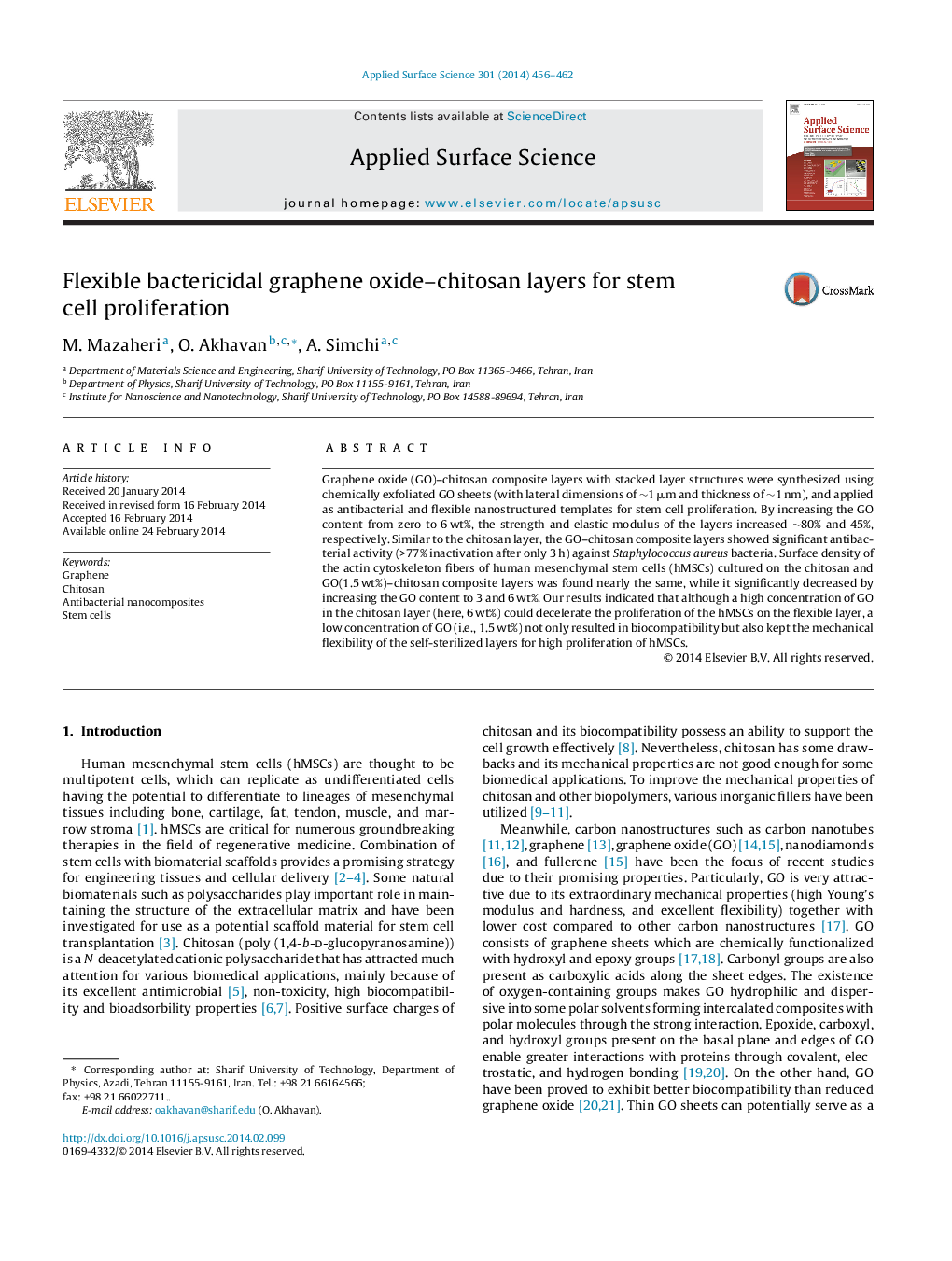| Article ID | Journal | Published Year | Pages | File Type |
|---|---|---|---|---|
| 5350864 | Applied Surface Science | 2014 | 7 Pages |
Abstract
Graphene oxide (GO)-chitosan composite layers with stacked layer structures were synthesized using chemically exfoliated GO sheets (with lateral dimensions of â¼1 μm and thickness of â¼1 nm), and applied as antibacterial and flexible nanostructured templates for stem cell proliferation. By increasing the GO content from zero to 6 wt%, the strength and elastic modulus of the layers increased â¼80% and 45%, respectively. Similar to the chitosan layer, the GO-chitosan composite layers showed significant antibacterial activity (>77% inactivation after only 3 h) against Staphylococcus aureus bacteria. Surface density of the actin cytoskeleton fibers of human mesenchymal stem cells (hMSCs) cultured on the chitosan and GO(1.5 wt%)-chitosan composite layers was found nearly the same, while it significantly decreased by increasing the GO content to 3 and 6 wt%. Our results indicated that although a high concentration of GO in the chitosan layer (here, 6 wt%) could decelerate the proliferation of the hMSCs on the flexible layer, a low concentration of GO (i.e., 1.5 wt%) not only resulted in biocompatibility but also kept the mechanical flexibility of the self-sterilized layers for high proliferation of hMSCs.
Keywords
Related Topics
Physical Sciences and Engineering
Chemistry
Physical and Theoretical Chemistry
Authors
M. Mazaheri, O. Akhavan, A. Simchi,
